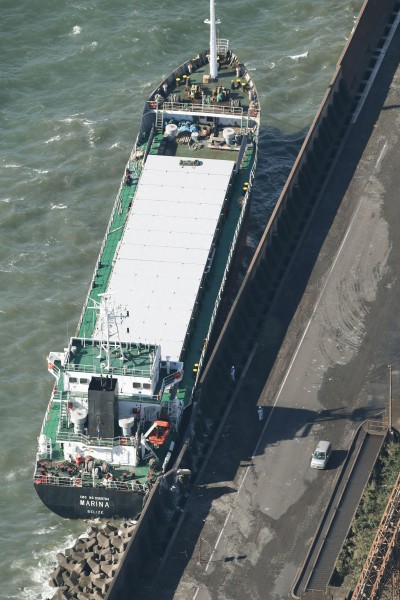A powerful typhoon swept through the Japanese archipelago Sunday through Monday, leaving at least four people dead and 200 others injured while disrupting traffic in wide areas including Tokyo during morning rush hours.
Typhoon Trami rapidly traversed eastern and northern parts of the largest main island of Honshu after making landfall in western Japan the previous night, the Japan Meteorological Agency said.
The typhoon, the season's 24th, downgraded to an extratropical cyclone off the Pacific coast of Hokkaido, the northernmost main island, by noon.
It widely disrupted morning commuter traffic in the capital region, forcing public transportation operators to shut down their services Sunday in central, eastern and western Japan. The resumption of services in the capital was delayed Monday morning for safety checks and falling trees.
Four people died in the prefectures of Yamanashi, Shiga, Kyoto and Tottori, while one person went missing in Miyazaki, according to local authorities.

In Tottori, western Japan, a 50-year-old truck driver was killed by a landslide. Meanwhile, a man was found in a river and later confirmed dead in Yamanashi, west of Tokyo.
Injuries were reported in 30 of the country's 47 prefectures, according to a tally by Kyodo News,
At one point, more than 1 million homes across the country suffered power outage due to damage on transmission system.
Major train stations in the metropolitan area were overcrowded in the morning as services remained disrupted following massive cancellations since the day before, while many flights were canceled through Monday.
"I won't make it on time because trains are way behind schedule," said a woman in her 40s who was commuting to her office in Fuchu, western Tokyo. "I don't know what time I will get there."
IN PHOTOS: Typhoon Trami batters Tokyo
A train on the Keio Line collided with a wall that had collapsed over a railway in the capital's Setagaya Ward around 4:45 a.m. None of its 70 passengers were injured, and its operator Keio Corp. resumed services about four hours later.
East Japan Railway Co. shut down all of its train services in the metropolitan area Sunday evening and had only resumed them partially by 9 a.m. Monday. The company said it was the first time it had stopped services early in Tokyo and surrounding areas after informing the public of its plans beforehand.
More than 910,000 people were affected by cancellations and delays of nearly 1,300 conventional train services and of 10 shinkansen bullet train services by JR East.
Central Japan Railway Co. stopped all bullet trains on the Tokaido Shinkansen Line between Tokyo and Shin-Osaka after 5 p.m. Sunday. The services were resumed around 7:30 a.m. Monday.
Around 120,000 people were affected by disruptions and cancellations of shinkansen bullet train services by JR Central, according to the railway operator.
 (Public transport is severely disrupted in central Tokyo)
(Public transport is severely disrupted in central Tokyo)
Shinkansen trains between Shin-Osaka and Hiroshima as well as many local railway services in western Japan were also halted Sunday.
Kansai International Airport in Osaka, which was temporarily crippled by a typhoon in early September, reopened at 6 a.m., although many of the flights scheduled in the morning had been canceled.
Airlines including Japan Airlines and All Nippon Airways canceled many flights Monday as well because massive cancellations of flights the previous day made it difficult for them to arrange aircraft.
 (Departure lounge at Kansai International Airport)
(Departure lounge at Kansai International Airport)
Japan has been hit by a series of typhoons this year, including Typhoon Prapiroon, which brought downpours and caused floods and mudslides in western Japan in July.
Last month, Typhoon Jebi flooded a terminal and a runway at Kansai airport, built on an artificial island, and caused a tanker to smash into and damage a bridge connecting the airport with the mainland, stranding thousands of people at the airport at one point.












